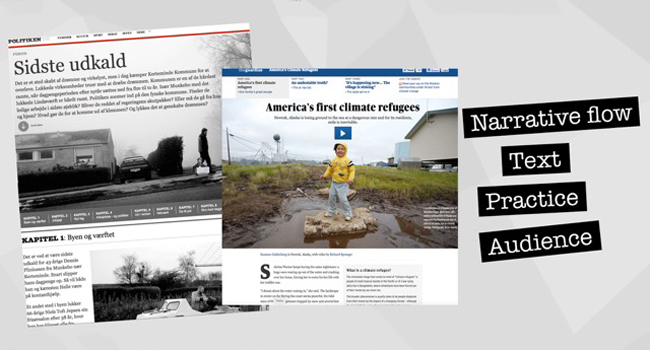Online multimedia news stories intermix media types that have traditionally been produced using distinctive, media-dependent storytelling logics and narrative structure(s). Consequently, the legacy media’s traditional storytelling templates have been challenged and further developed within multimedia storytelling.
The dissertation contains two separate parts: a collection of five research papers and a summary comprising three chapters that place the papers in a scholarly context within journalism research, present the research design and the position in field of the study. Furthermore the summary discusses the concepts ‘quality journalism’ and ‘narrative flow’ that are central concepts of the papers.
Narrative flow of longform embedded multimedia narratives is studied through three perspectives; textual and visual analysis employing visual social semiotics and journalistic theory, eye-tracking experiment with readers and qualitative interviews with experienced media employees that are analysed using a phenomenographic approach.
The dissertation identifies and discusses key narrative flow factors and through the different research approaches identifies both convergence and discrepancy in the research outcome. This demonstrates the fruitful outcome of mixed methods when investigating narrative flow in author-driven multimedia narratives.
The dissertation’s main contributions are a proposal of a taxonomy of multimedia narratives and identification, analysis and discussion of key visual and content related narrative flow factors in embedded author-driven multimedia narratives. Further, the analysis of how a group of readers navigate through a longform linear multimedia narrative demonstrates the complexity of and unpredictability of reader interaction with online visual design and content structure. The contribution of the phenomenographic analysis is the elaboration of six different collective categories of perception of multimedia production: the learner, the developer, the artist, the collaborator, the publisher and the manager.







